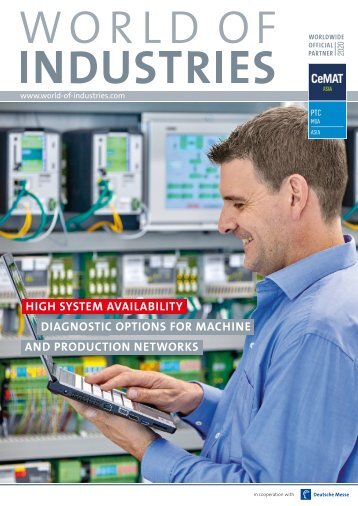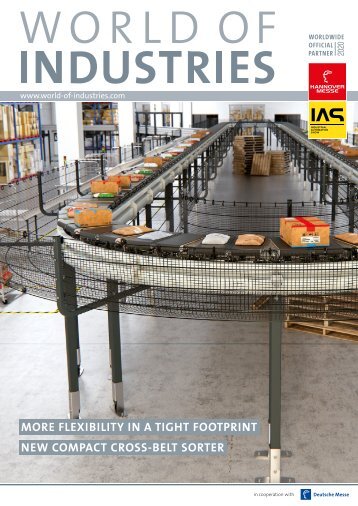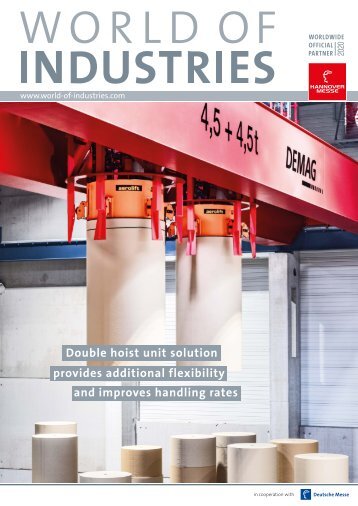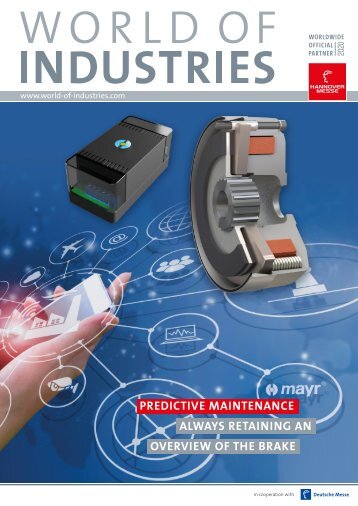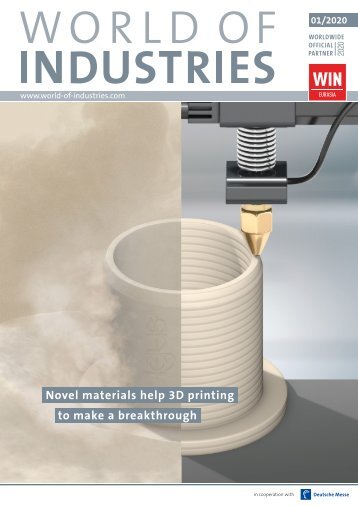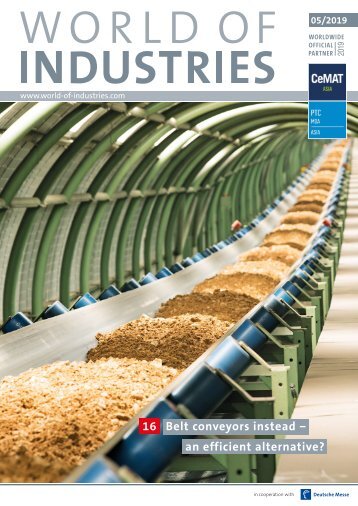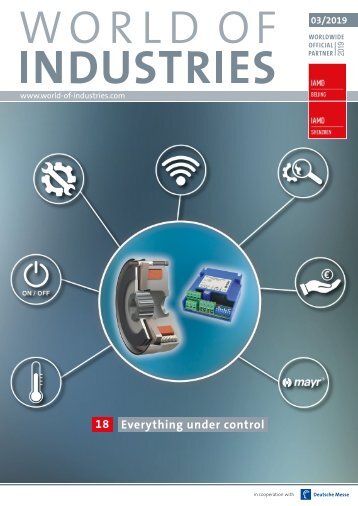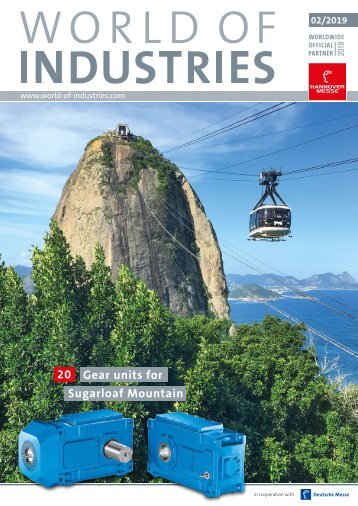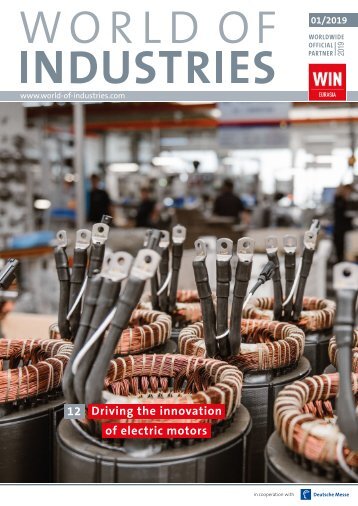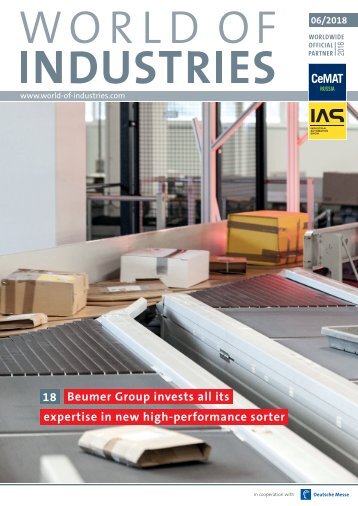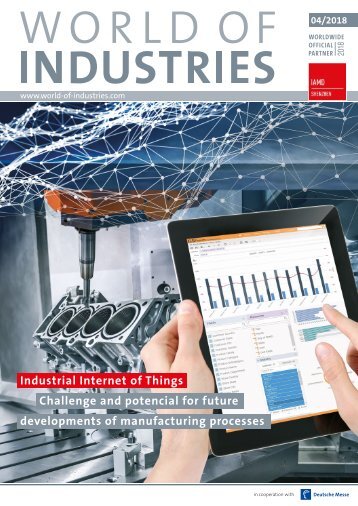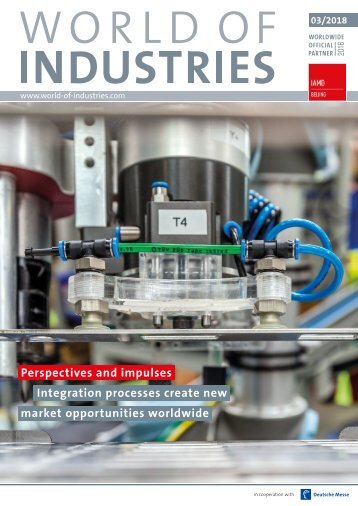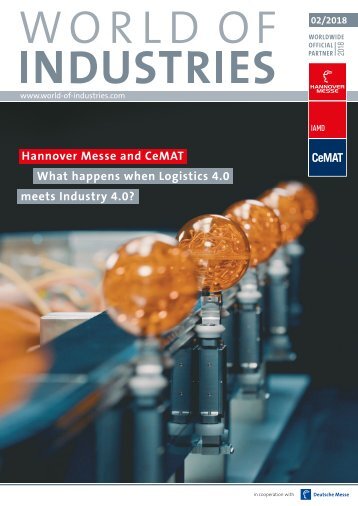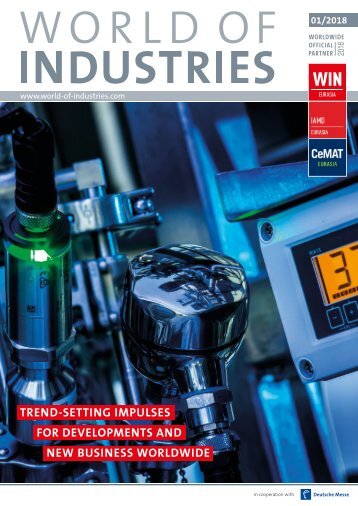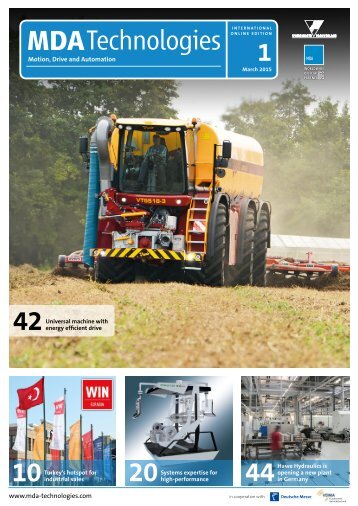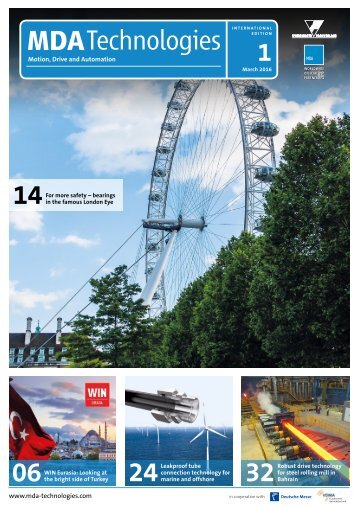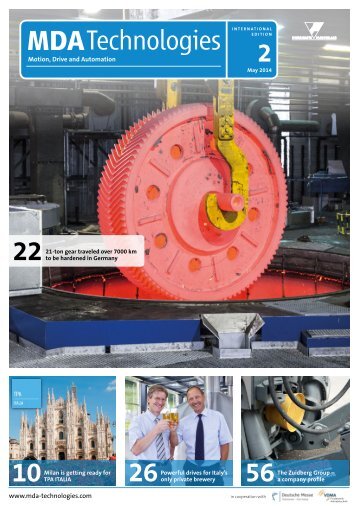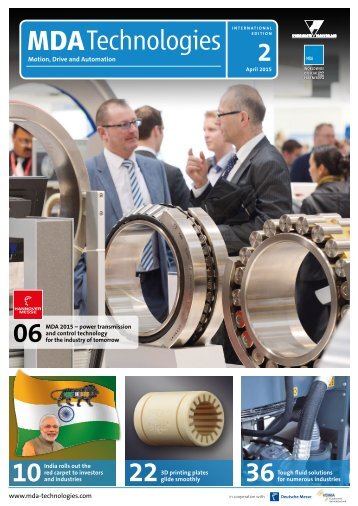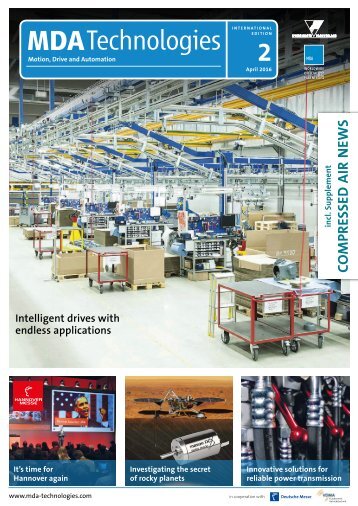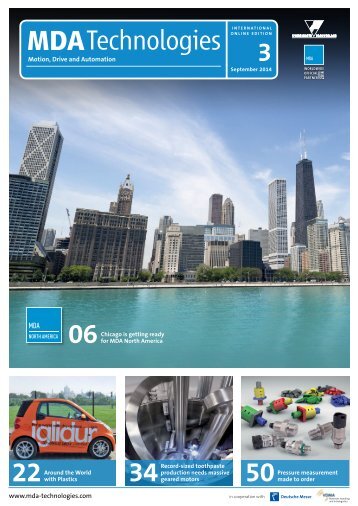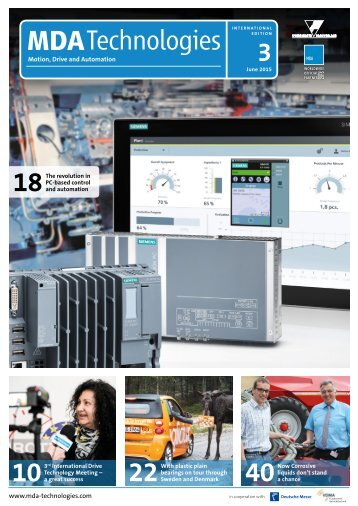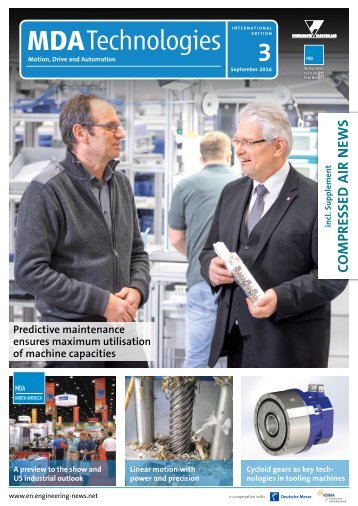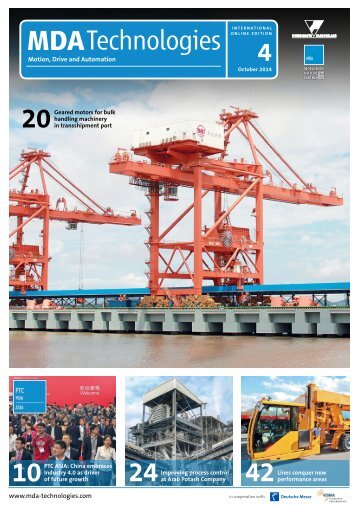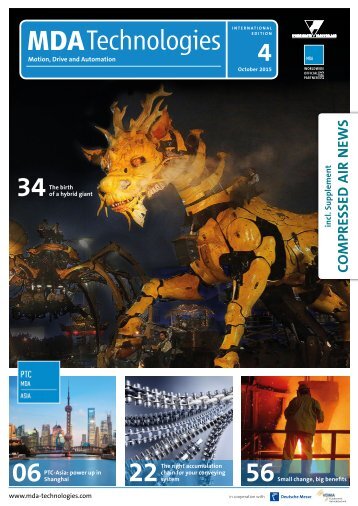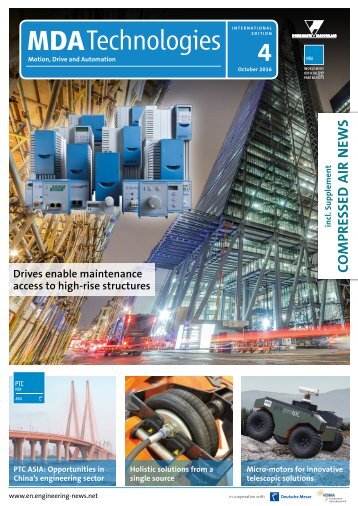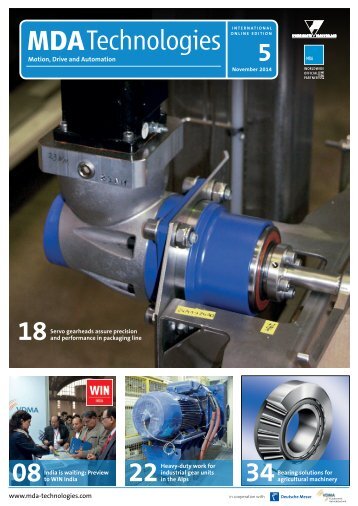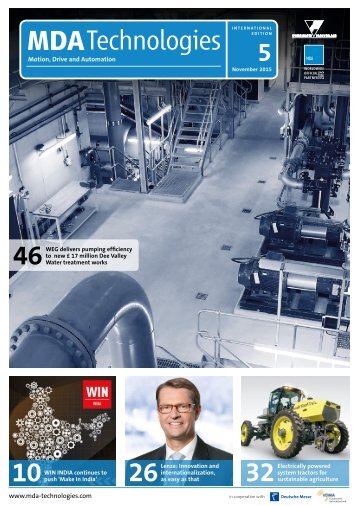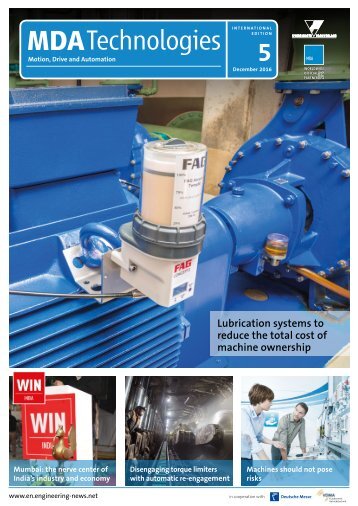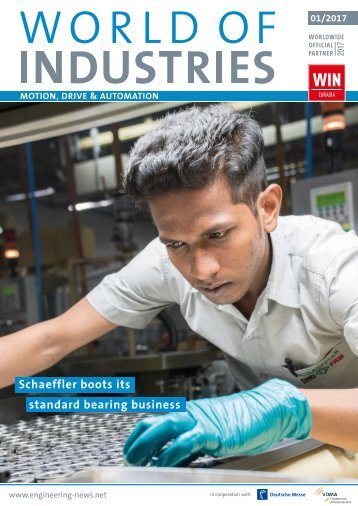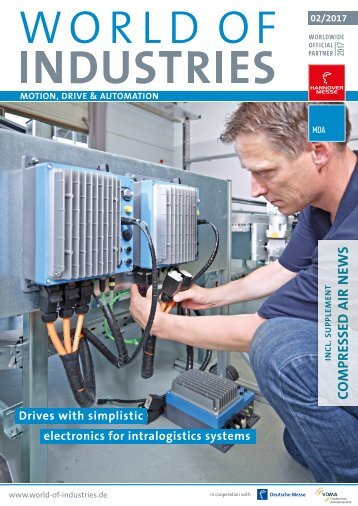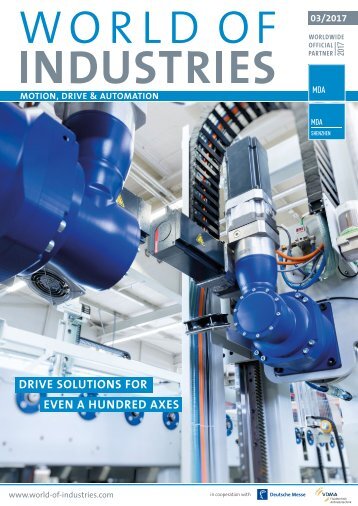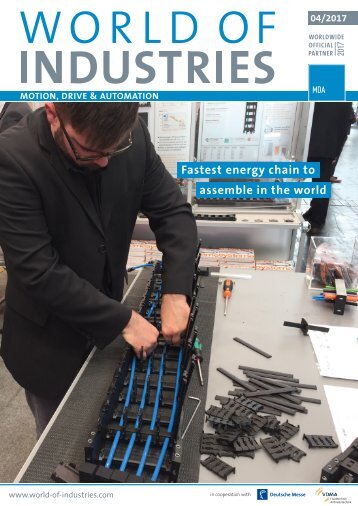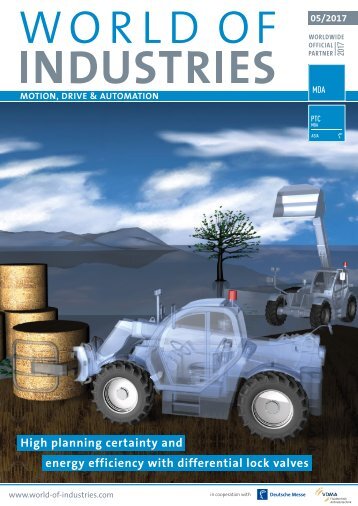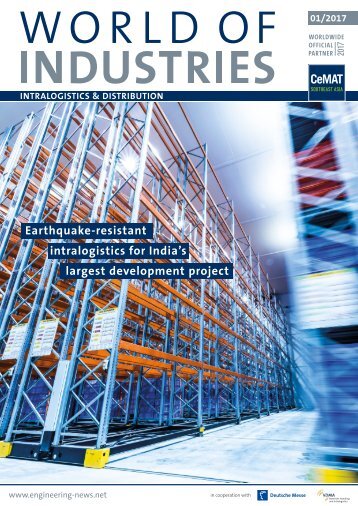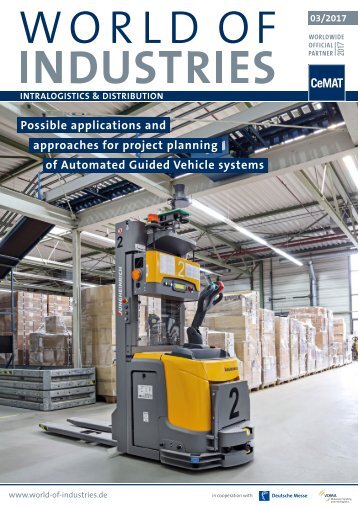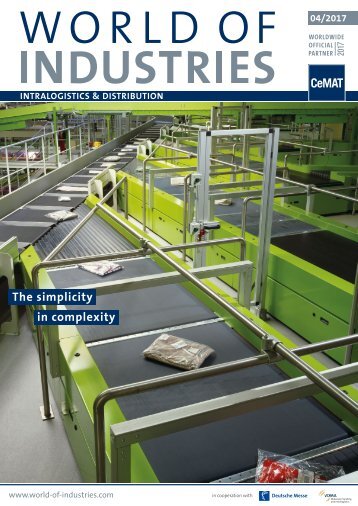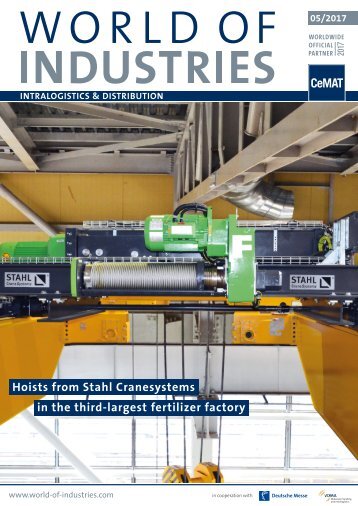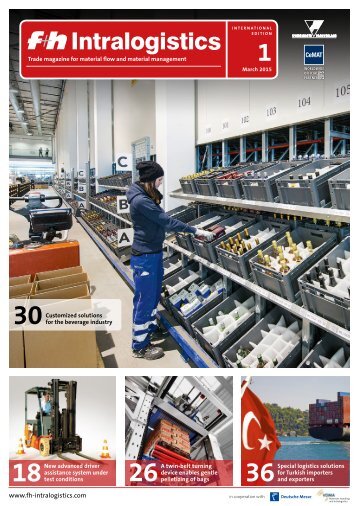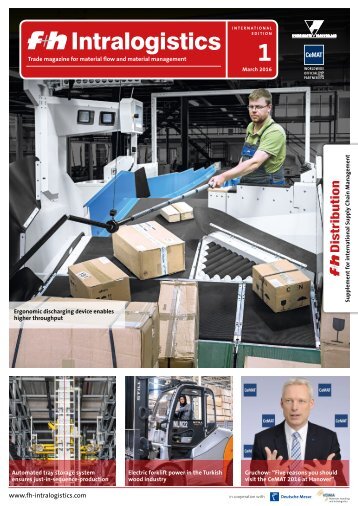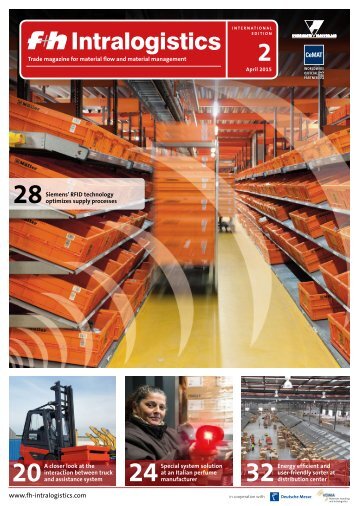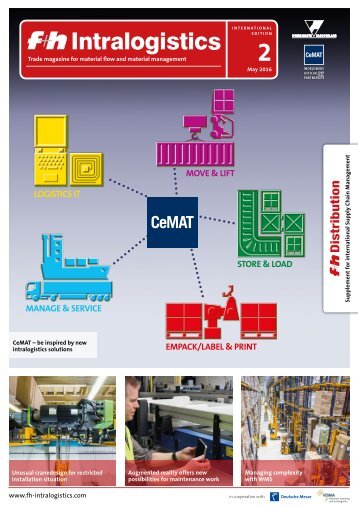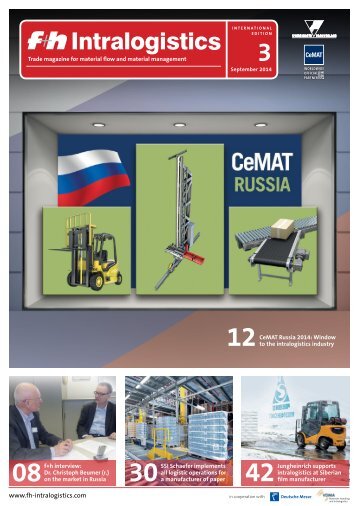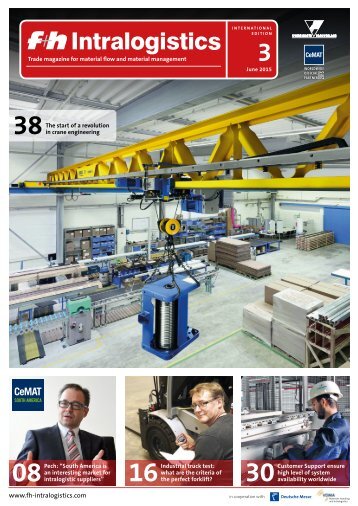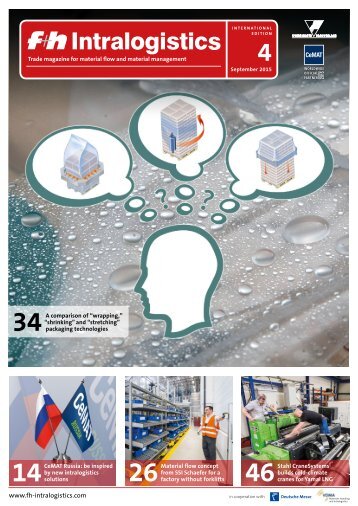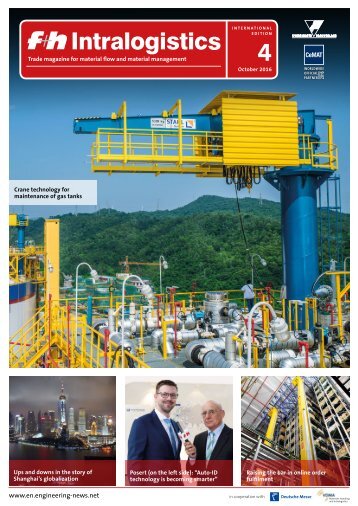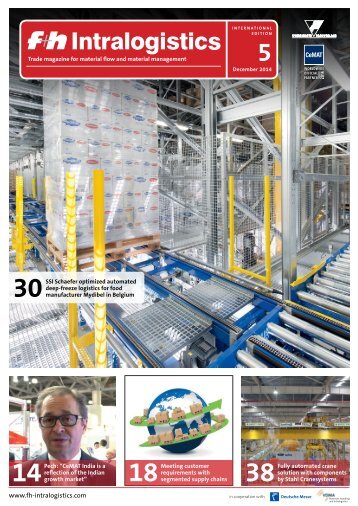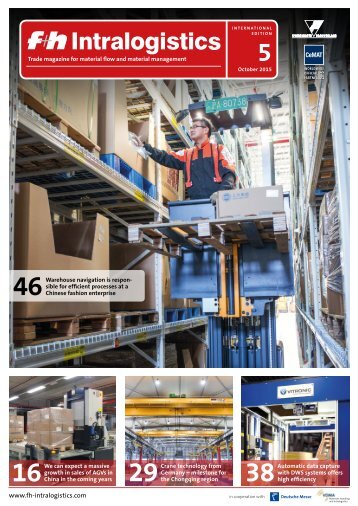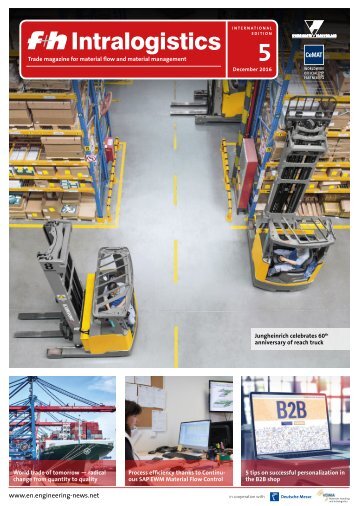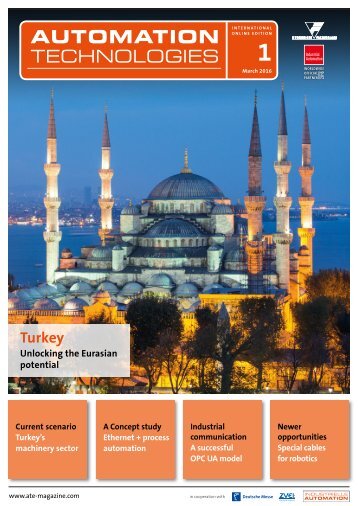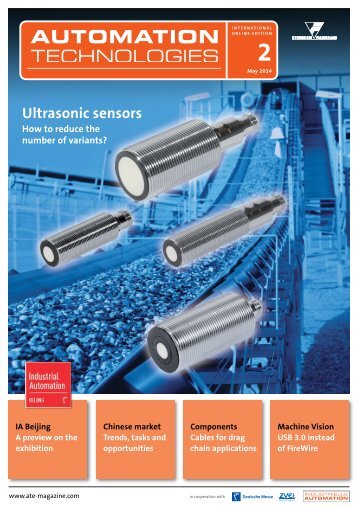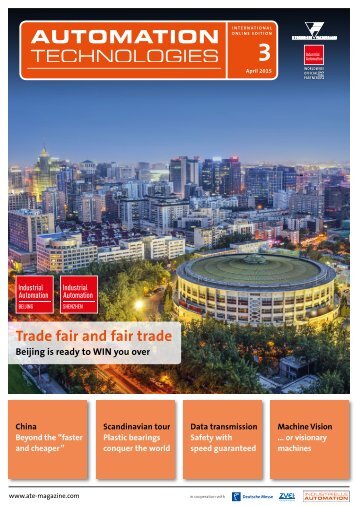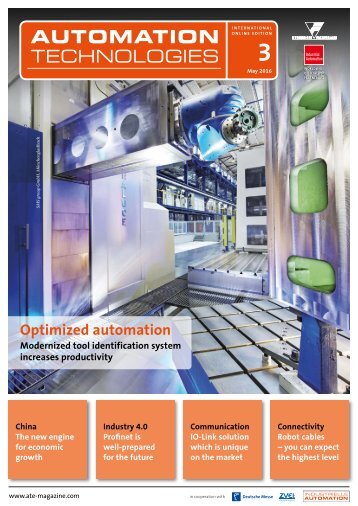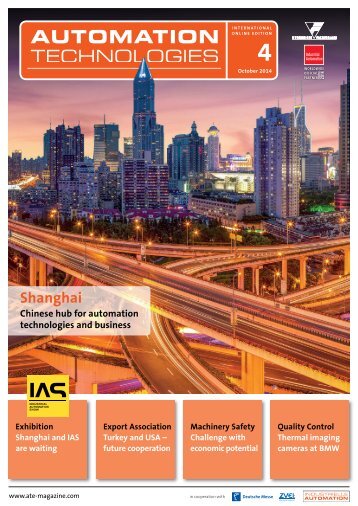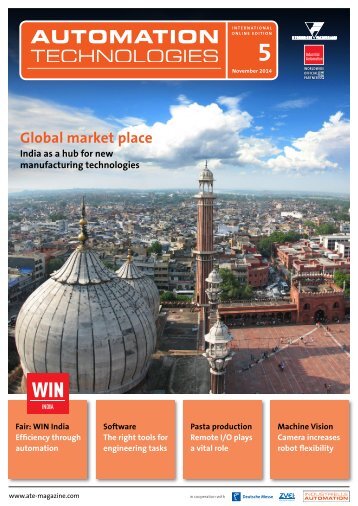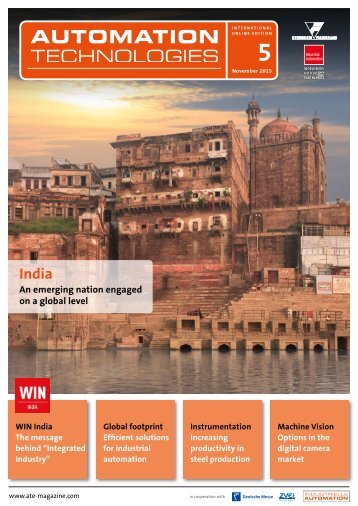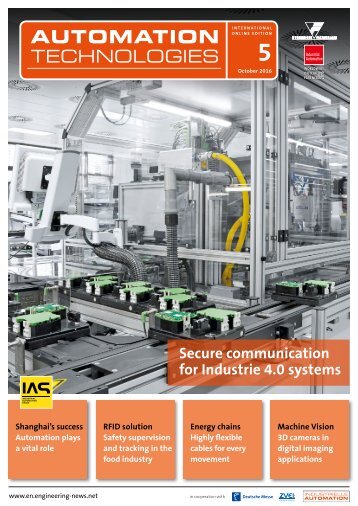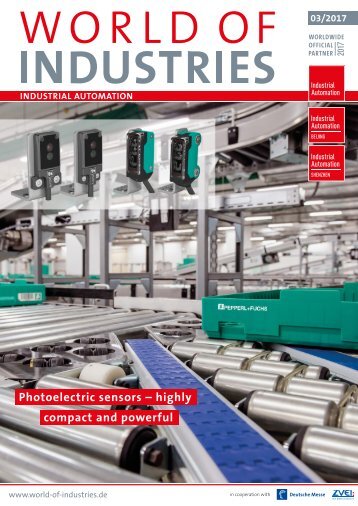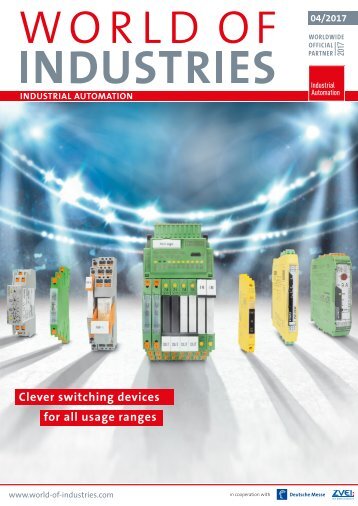f+h Intralogistics 1/2015
- Text
- Fuh
- Intralogistics
FROM RESEARCH Individual
FROM RESEARCH Individual transport packaging from 3D printers Jörg Loges Most of all small-scale series or sensitive prototypes that are very expensive to manufacture require safe transport packaging. Producing customized packaging using 3D printers is an alternative to producing costly, traditional packaging. The first results of a corresponding research project by the Institute for Packaging Technology are now available. 01 The left chamber of the 3D printer features the Miscanthus powder used to print the object in the operating space on the right-hand side Dipl.-Ing. Jörg Loges is the deputy manager at the Institute for Packaging Technology (IfV) at VVL e. V., Dortmund/Germany Securely packaging unique custom builds or small-scale series is often a tough challenge for logistics. As a result, developing dedicated packaging is often not profitable because the incurred development and production costs cannot be compensated for by producing a large number of packaging units. This makes each individual packaging unit very costly and customers are usually not prepared to pay significant amounts for packaging. However, smallscales series products or prototypes in particular are often very costly to produce and very sensitive to transport loads. Suitable packaging is particularly important to protect said goods from damage. A currently on-going research project at the Institute for Packaging Technology (IfV) at VVL e. V., Dortmund, with partners in industry as well as research and development is developing a packaging concept for small-scale series or individual parts using Miscanthus as a renewable resource and raw material in conjunction with a suitable 3D printing procedure. Individual packaging for individual products Prototypes are often very valuable and hence require adequate protection, e. g. if the produced wax model is transported to precision casting. Developing adapted packaging can take a long time and become very costly. However, generative production methods (i. e. primary forming), and 3D printing is such a method, allow to reduce production costs and time. In the event that a customized product requires dedicated packaging, it is possible to quickly and costeffectively produce it using generative procedures. For this purpose, the available CAD data from the prototype is applied and converted into a “negative image” using software that is currently in development. After having made the corresponding adaptations, this negative image already corresponds to the desired packaging shape (lead image). In order to especially live up to the sustainable nature of this research project Miscanthus 16 f+h Intralogistics 1/2015
FROM RESEARCH straw is employed for pressing, a material already in use as insulation for timbered houses or as fuel. The material is prepared for 3D printing so that a mixture of very fine, short fiber components is available for processing. Such preparation procedures are already available, however, the use of such particular preparation fractions has not been analyzed closely enough. The production process The commercially available 3D printer (Figure 01) used as part of the project to print the prepared Miscanthus powder into packaging in a powder-binder process consists of a supply container and an operating area (Figure 02). Both printer system parts are equipped with a base that moves along the Z axis, the supply container base moves upwards and the operating area base moves downwards. The system is additionally equipped with a print head that is attached to a carriage, enabling the print head to move along the X and Y axis. The bottom side of the carriage features a slide to ensure the material is transferred from the supply container to the operating area. Before such a simple systems engineering setup is able to produce any packaging the product is sliced into layers on a computer. Said layers are then transferred to the system one after the other and the print head produces them from the powder material. A binder which has to be precisely adapted to the powder is used for printing. This method is employed to create the three-dimensional object, layer for layer (Figure 03). In this process, the outline must be extremely precisely produced to prevent any mechanical loads on geometrical parts and hence damage to the product intended for packaging. The packaging’s level of precision correlates with the selected thickness 03 Printed transport packaging for the cut wax model 02 Principle of 3D printing using the powder-binder method of the layers which, in turn, depend on the powder used. Comprehensive trial series are currently analyzing the correct layer thickness suitable for the prepared, powdery Miscanthus straw. In this process, it is important to take into account that there are still fiber components available which potentially increase the stability of the parts to be produced, but have negative effects on the formation of the layers. As a result, it may be necessary to increase the thickness of the layers, even if this, on the other hand, would negatively influence the precise shape of the packaging. At the same time, a host of organic substances are available as binders which are currently being analyzed regarding their suitability. In this process, the material used must safeguard the final product is suitable for composting. Benefits and status of research and development As 3D printing makes mold design for packaging production obsolete, we can expect significant savings as a result of adapted packaging production for small-scale series and unique, custom builds. Furthermore, it will be possible to considerably reduce the necessary storage facilities to supply packaging materials as printed packaging merely requires powder and binder which can be stored off site, in silos. As a consequence, the lower degree of locked capital, released as a result of the packaging that is no longer required, quickly compensates for the investment in a 3D printer. However, to ensure future applications of generative procedures to produce packaging it is necessary to analyze the material About IfV Developing and testing packaging are amongst the core activities of the Institute for Packaging Technology (IfV). This includes status and weakpoint analyses, investigations regarding profitability and designing packaging to suit the requirements. With regard to their suitability the IfV simulate and optimize the transport, transfer and storage loads of packaging and loading units. The IfV continues to act as a co-organizer for specialist conferences as well as research and development seminars. technology of the raw materials used, particularly Miscanthus. We currently do not have scientific data available in this area that allows us to define the achievable strength values of printed materials as well as their suitability for transport protection and braces. Additionally, there are no empirical values on the use of organic fillers in professional applications. Apart from developing a robust and sustainable printing procedure, the achievable level of protective properties for packaging produced in this way is crucial, e.g. based on the high degree of production precision and the option to also create complex geometrical shapes. Photos: Lead photo: Beckmann Institut für Technologieentwicklung e. V., 01, 03 IfV, 02 Author www.vvl-ev.de f+h Intralogistics 1/2015 17
- Page 1 and 2: Intralogistics Trade magazine for m
- Page 3: TABLE OF CONTENT 06 News and inform
- Page 6 and 7: Worldwide News Eisenmann receives o
- Page 8 and 9: MATERIALS HANDLING EURASIA Turkey s
- Page 10 and 11: GLOBAL BUSINESS I INTERVIEW Continu
- Page 12 and 13: GLOBAL BUSINESS German-Turkish rela
- Page 14 and 15: Optimizing, controlling and monitor
- Page 18 and 19: INDUSTRIAL TRUCKS I FORKLIFT TEST T
- Page 20 and 21: INDUSTRIAL TRUCKS I FORKLIFT TEST T
- Page 22 and 23: INDUSTRIAL TRUCKS Fleet management
- Page 24 and 25: INDUSTRIAL TRUCKS About Stöcklin S
- Page 26 and 27: MATERIAL FLOW Schwenk Putztechnik r
- Page 28 and 29: MATERIAL FLOW only has to enter the
- Page 30 and 31: WAREHOUSING SSI Schaefer brings cus
- Page 32 and 33: WAREHOUSING 03 Picking of the fast-
- Page 34 and 35: WAREHOUSING The modular warehouse m
- Page 36 and 37: LOGISTICS SERVICE JF Hillebrand and
- Page 38 and 39: CRANES AND HOISTS Demag cranes crea
- Page 40 and 41: CRANES AND HOISTS German crane tech
- Page 42 and 43: Product News Barcode positioning sy
- Page 44: SLOVAKIA ISTANBUL MILANO SYDNEY SÃ
Inappropriate
Loading...
Mail this publication
Loading...
Embed
Loading...

